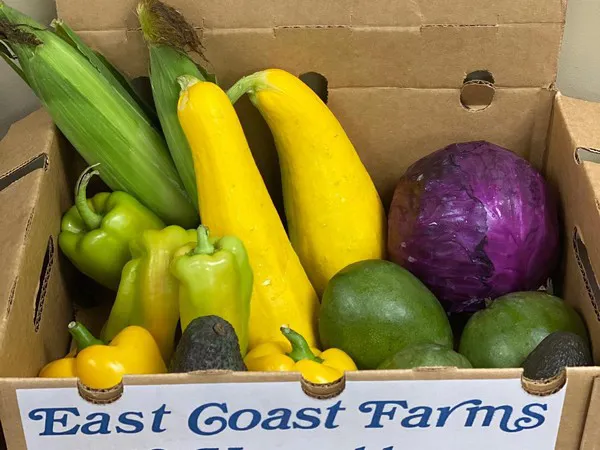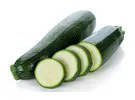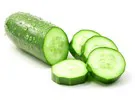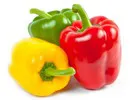Florida row crop growers are facing closer--and farther-flung--challenges to their production.
“We’ve had some weather issues. There’s been one cold front and we had a rain event that came through. But the concern now is an arctic front that’s supposed to penetrate deep into the state on the weekend,” says Neil Mazal of East Coast Farms & Vegetables in Lake Worth, FL, who details further how row crops look currently. “Generally, Mexican growers are sure to react with higher prices in anticipation of a freeze in Florida.”

Beans: “With this arctic freeze, we could see a hard freeze north of Lake Okeechobee and the bean deal is planted north of the lake for volume into March for the Easter pull,” says Mazal. If that crop does get hit with sustained temperatures below 30 degrees, growers could lose those plants and it would be a devastating event for the bean deal in Florida.
He also adds that green bean pricing could increase to $40 depending on how cold it gets in Florida. “Some receivers might look at French beans as a substitute as a value proposition,” he adds.
 Squash: There’s concern for squash plants too. If temperatures drop below the mid-40s, the plants stop fruiting and there’s a lack of pollination. “If there’s calm wind and cold enough temperatures to get frost, then we have additional concerns and there’s considerable bloom drop. It’s a whole chain of events that could impact the squash deal,” he says.
Squash: There’s concern for squash plants too. If temperatures drop below the mid-40s, the plants stop fruiting and there’s a lack of pollination. “If there’s calm wind and cold enough temperatures to get frost, then we have additional concerns and there’s considerable bloom drop. It’s a whole chain of events that could impact the squash deal,” he says.
Recently the squash market has been elevated with zucchini pricing between the $18-$16 range, depending on size. (Fancy zucchini has been as high as $20.) “Yellow squash is even higher in price but it could be in that $20-$18 range. Squash bushel prices are a bit lower but with cold temperatures, large squash will become scarce as sizing skews towards fancy sizing. The quality of the crop has been pretty good but there’s been a lack of production,” says Mazal.
Bigger macro issues influencing squash production are the continued loss of farmland to housing and tourism development in Florida. “And the farms plant less now in anticipation of product coming out of Mexico,” he says. Mexico has also been impacted by bad weather in the early stages of planting in the northern growing areas making for elevated markets on limited supply.
 Cucumber: Cucumber production wrapped up three weeks ago in Florida and supplies are now coming from Honduras.
Cucumber: Cucumber production wrapped up three weeks ago in Florida and supplies are now coming from Honduras.
“The cucumber market is also being impacted by transportation costs. Ocean freight is very high and it’s difficult to get product out of the port to the shipping points because they don’t have enough trucks,” says Mazal. At the same time, cucumber demand is softer given demand is driven by weather conditions in the end-user area. “The Northeast or the Midwest is bitter cold and snowing and in that weather, very few people walk in and say they’re having the salad instead of the soup,” he says.
Mexican cucumber production has been good with reasonable FOB prices--but transportation costs are influencing price.
 Open-field peppers: “Pepper production is a little bit lower than it has been in past years. Part of that is driven by the attrition of farmland but it’s also being driven by competition from Mexican growers,” says Mazal.
Open-field peppers: “Pepper production is a little bit lower than it has been in past years. Part of that is driven by the attrition of farmland but it’s also being driven by competition from Mexican growers,” says Mazal.
Mexican pepper price points have been as high as $12 FOB but as low as $7-$8 FOB. “Growing costs for production for a box of green pepper in Florida is around $12 to break even. That’s driving people to plant a little less to reduce the amount of product available which drives the price point up,” he says.
Along with Florida and Mexican production, peppers are also coming from Honduras, El Salvador and the Dominican Republic. Mazal notes that some Mexican growers are consigning red, yellow and orange peppers and Honduran growers are discounting them because of the competition. At the same time, in general, retailers are currently promoting items such as strawberries, grapes and cherries rather than row crops.
Regardless of commodity, trucking remains a critical concern for growers and shippers in Florida. “There are more trucks idle and more trucking companies shutting down than ever before. A lot of young people don’t want to become truck drivers. Local drivers want more money to drive trucks and they move from job to job. That’s driving up the cost delivered even within the state,” says Mazal.
So between increasing costs of transportation and production expenses, climate change, land attrition and accessing labor, Mazal has long-term concerns for the Florida agriculture industry. “The Florida industry will really be in trouble over the next 15-20 year timeline because of these factors. We’ll wind up where all our winter row crop production will be from Mexico and Honduras,” he says.
 For more information:
For more information:
Neil Mazal
East Coast Farms & Vegetables
Tel: +1 (561) 951-0876
neil@eastcoastfarms.us
https://www.eastcoastfarms.us/
